Family: Tenthredinidae
Family common name: common sawflies
Subfamily: Selandriinae
Tribe: Aneugmenini
Genus: Eustromboceros Rohwer, 1911
Subgenera: none
The Tenthredinidae are the most species-rich family and are found throughout the world, in all continents but Antarctica. They are known as the “common sawflies.” They can generally be recognized by a cylindrical body and long, segmented antennaeantenna:
the sensory organ emerging from the front of the head, usually between the compound eyes and above the clypeus; includes the flagellum, scape and pedicel
 . Otherwise, they come in a variety of colors, sizes, and forms (Goulet 1992Goulet 1992:
. Otherwise, they come in a variety of colors, sizes, and forms (Goulet 1992Goulet 1992:
Goulet H. 1992. The genera and subgenera of the sawflies of Canada and Alaska: Hymenoptera. Symphyta. The insects and arachnids of Canada. Part 20. Agriculture Canada Publication.).
Sawflies in the Selandriinae subfamily are relatively small and slender. The range of Selandriinae is worldwide; it occurs on all continents except Antarctica (Goulet 1992Goulet 1992:
Goulet H. 1992. The genera and subgenera of the sawflies of Canada and Alaska: Hymenoptera. Symphyta. The insects and arachnids of Canada. Part 20. Agriculture Canada Publication.). It is the most common and diverse group of tenthredinids in tropical regions, particularly in Central America, South America, and Southeast Asia (Smith 1969eSmith 1969e:
Smith DR. 1969e. Nearctic Sawflies. II. Selandriinae: Adults (Hymenoptera: Tenthredinidae). Technical Bulletin, U.S. Department of Agriculture 1398: 1-48.). Selandriinae contains the only known sawflies that feed on non-vascular plants, specifically ferns (Smith et al. 2013Smith et al. 2013:
Smith DR, Janzen DH and Hallwachs W. 2013. Food plants and life histories of sawflies of the families Argidae and Tenthredinidae (Hymenoptera) in Costa Rica, a supplement. Journal of Hymenoptera Research 35: 17-31. https://doi.org/10.3897/JHR.35.5496). The subfamily can be distinguished from other subfamilies by wing venationvenation:
the network of veins on a wing
(Goulet 1992Goulet 1992:
Goulet H. 1992. The genera and subgenera of the sawflies of Canada and Alaska: Hymenoptera. Symphyta. The insects and arachnids of Canada. Part 20. Agriculture Canada Publication.).
Eustromboceros is monotypicmonotypic:
describes having only one representative; ex. a genus that includes only one species
in the NearcticNearctic:
describing the region of the Northern Hemisphere that includes North America south through northern Mexico
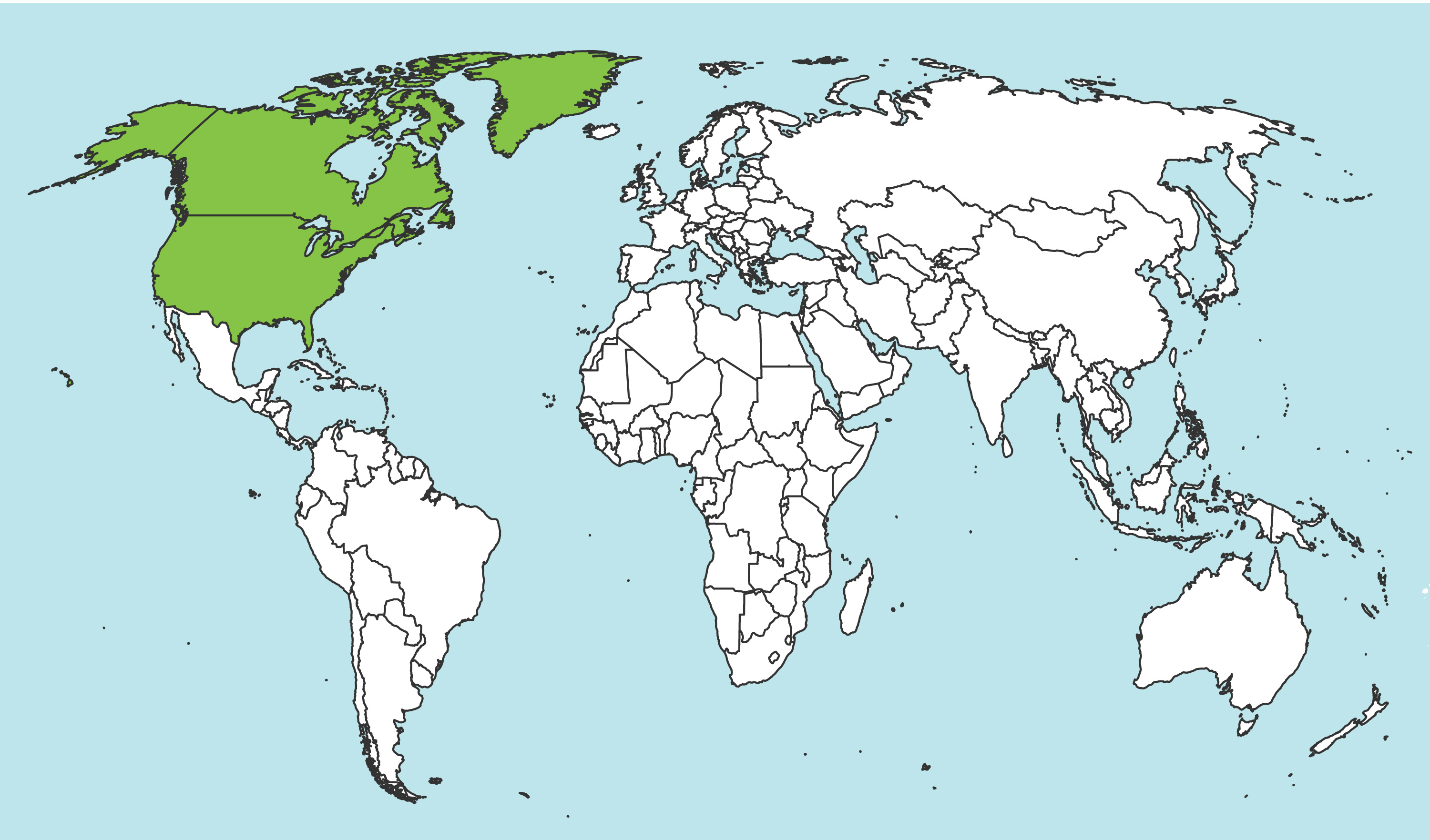 region. Eustromboceros rufocaudatus are about 6.5 mm in length and mostly black and white with an orange abdomenabdomen:
region. Eustromboceros rufocaudatus are about 6.5 mm in length and mostly black and white with an orange abdomenabdomen:
the third and last segment of an insect's body; in sawflies this is usually made up of 11 segments (segments 9 and 10 often fused)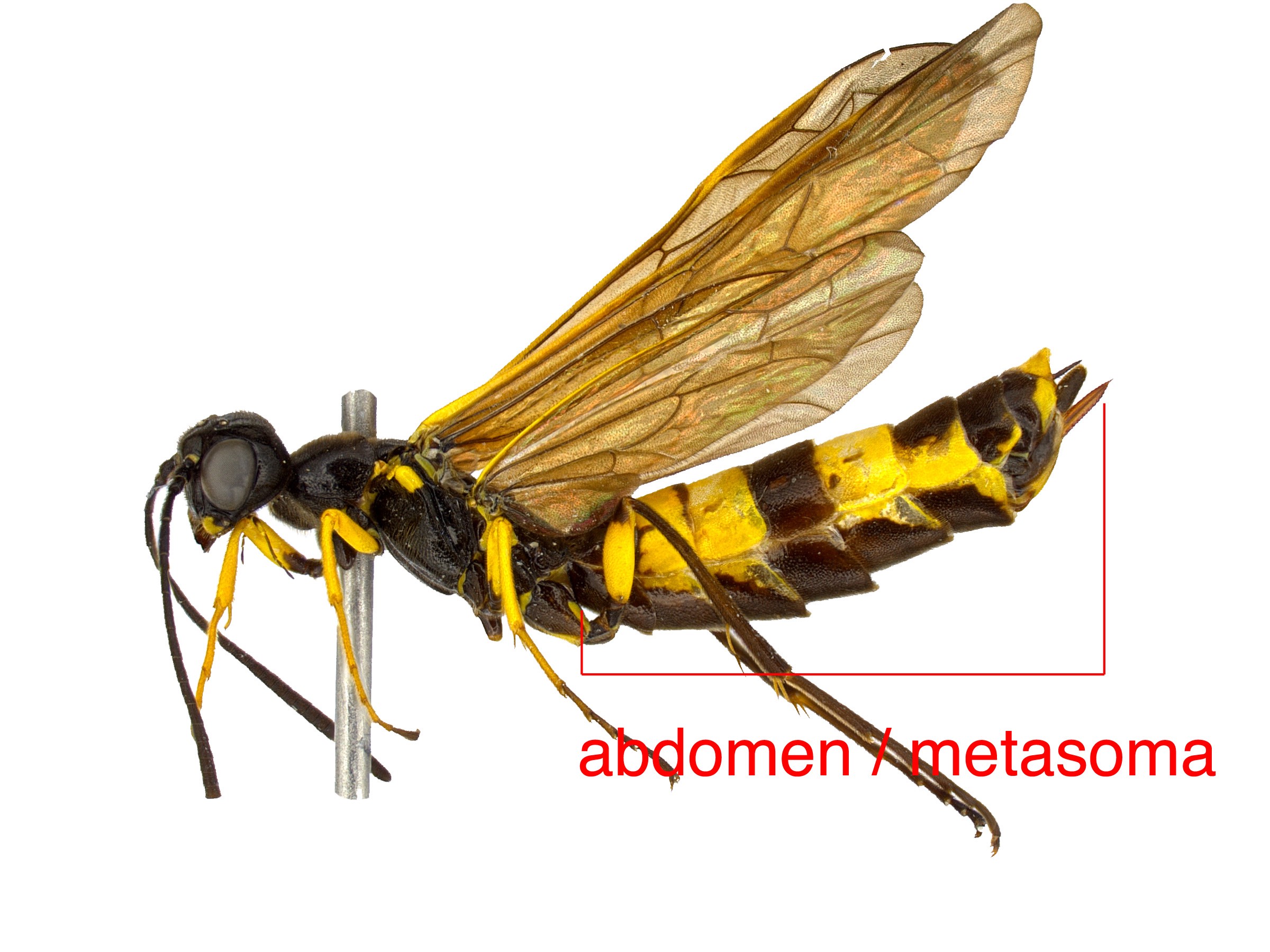 and darkened wings (Smith 1969eSmith 1969e:
and darkened wings (Smith 1969eSmith 1969e:
Smith DR. 1969e. Nearctic Sawflies. II. Selandriinae: Adults (Hymenoptera: Tenthredinidae). Technical Bulletin, U.S. Department of Agriculture 1398: 1-48.).
There are three described extantextant:
in existence; opposite of extinct
species worldwide, and all are North American (Taeger et al. 2010Taeger et al. 2010:
Taeger A, Blank SM, and Liston AD. 2010. World Catalog of Symphyta (Hymenoptera). Zootaxa 2580: 1-1064.).
Subfamily characters
 vein Rs+M curved near intersection with veinvein:
vein Rs+M curved near intersection with veinvein: Sc+R (Smith 1969eSmith 1969e:
Sc+R (Smith 1969eSmith 1969e: veins M and m-cu about parallel (Smith 1969eSmith 1969e:
veins M and m-cu about parallel (Smith 1969eSmith 1969e: vein 2r-m present (Goulet 1992Goulet 1992:
vein 2r-m present (Goulet 1992Goulet 1992:Genus characters
 margin straight (Smith 1969eSmith 1969e:
margin straight (Smith 1969eSmith 1969e: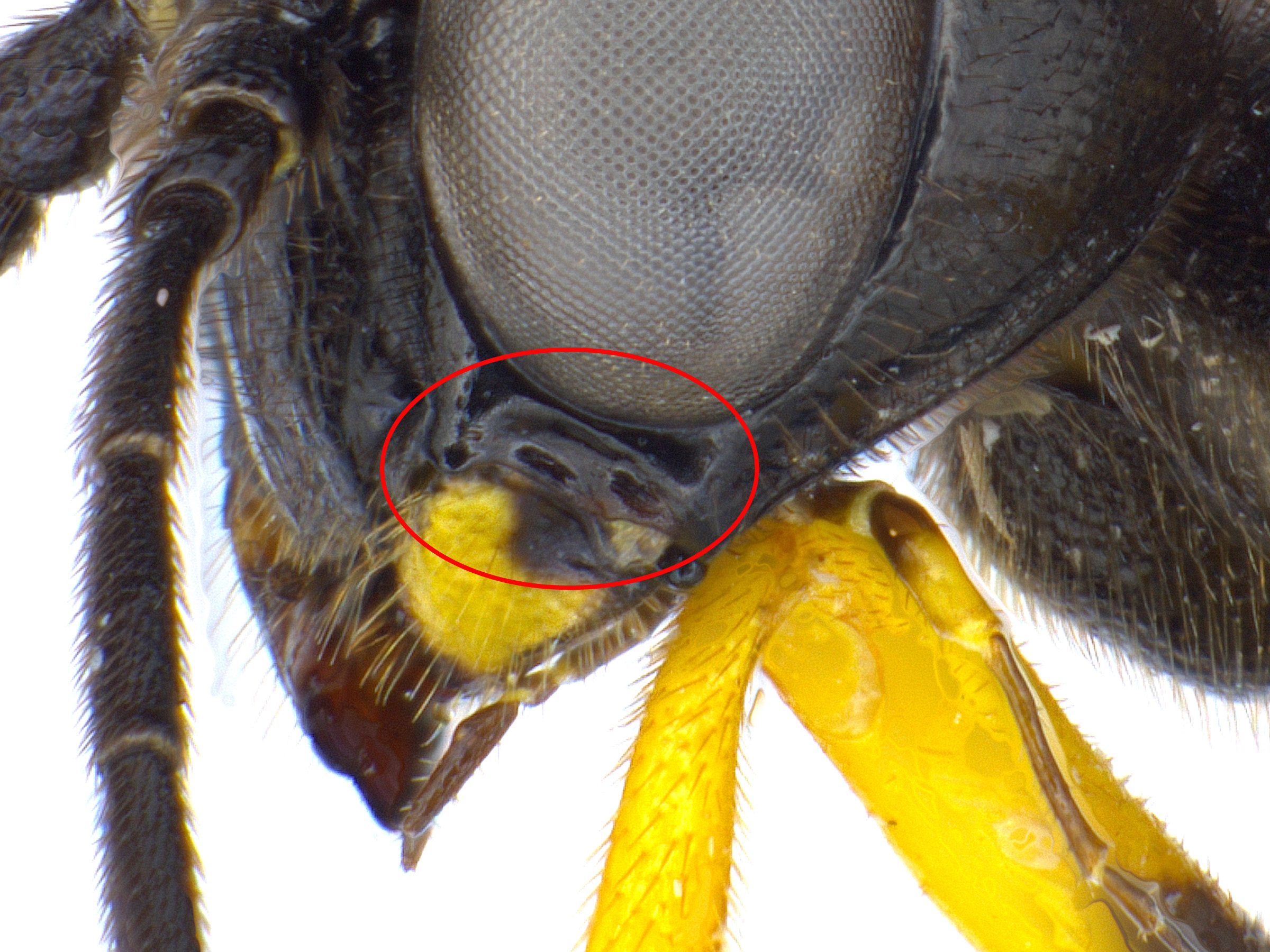 extremely narrow (Smith 1969eSmith 1969e:
extremely narrow (Smith 1969eSmith 1969e: wider than long (Smith 1969eSmith 1969e:
wider than long (Smith 1969eSmith 1969e: sometimes appears somewhat serrateserrate:
sometimes appears somewhat serrateserrate: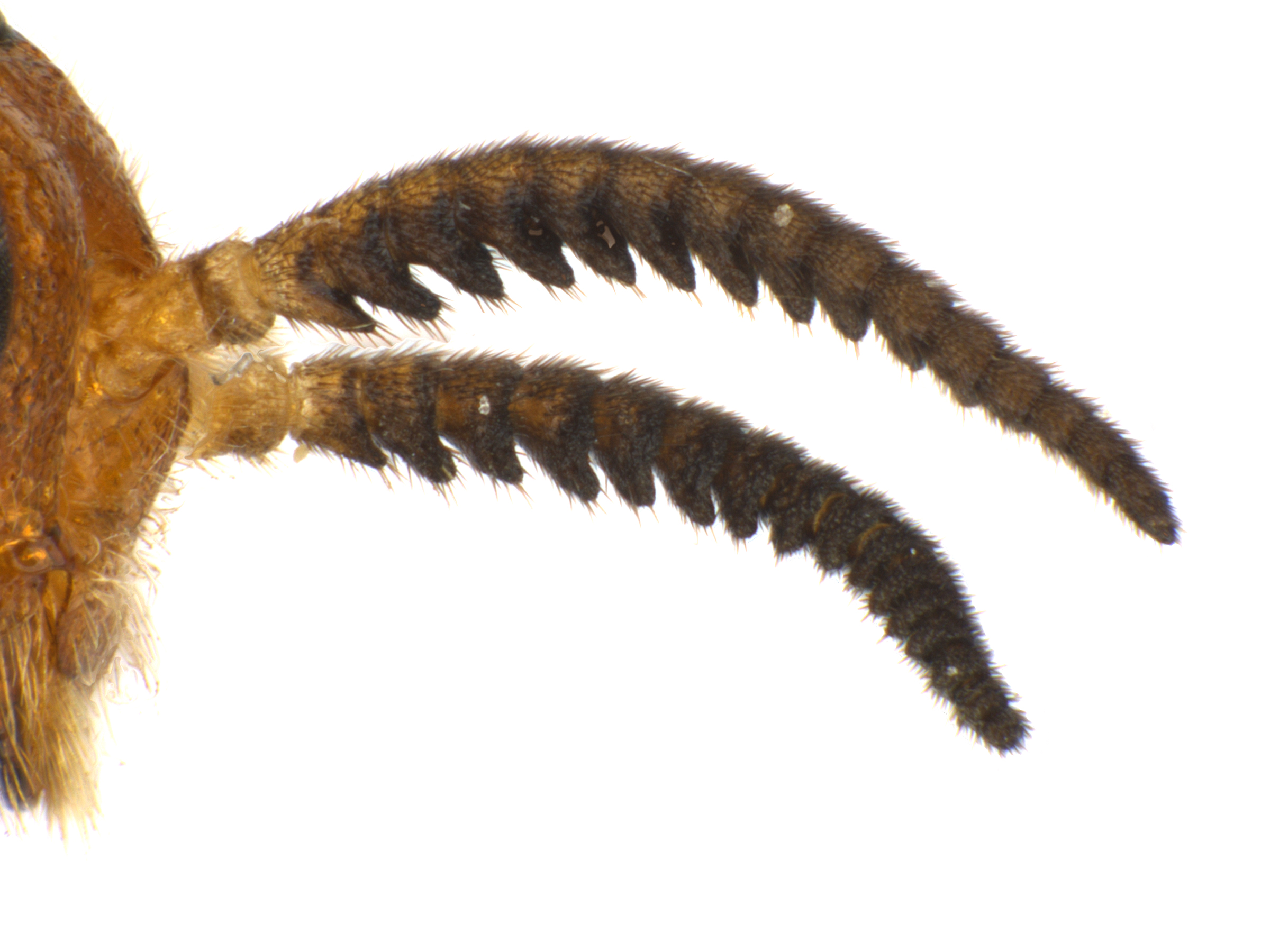 (Smith 1969eSmith 1969e:
(Smith 1969eSmith 1969e: vein M meeting Sc+R at intersection of Rs+M and Sc+R (Smith 1969eSmith 1969e:
vein M meeting Sc+R at intersection of Rs+M and Sc+R (Smith 1969eSmith 1969e: anal crossveinanal crossvein:
anal crossveinanal crossvein: anal cellanal cell:
anal cellanal cell: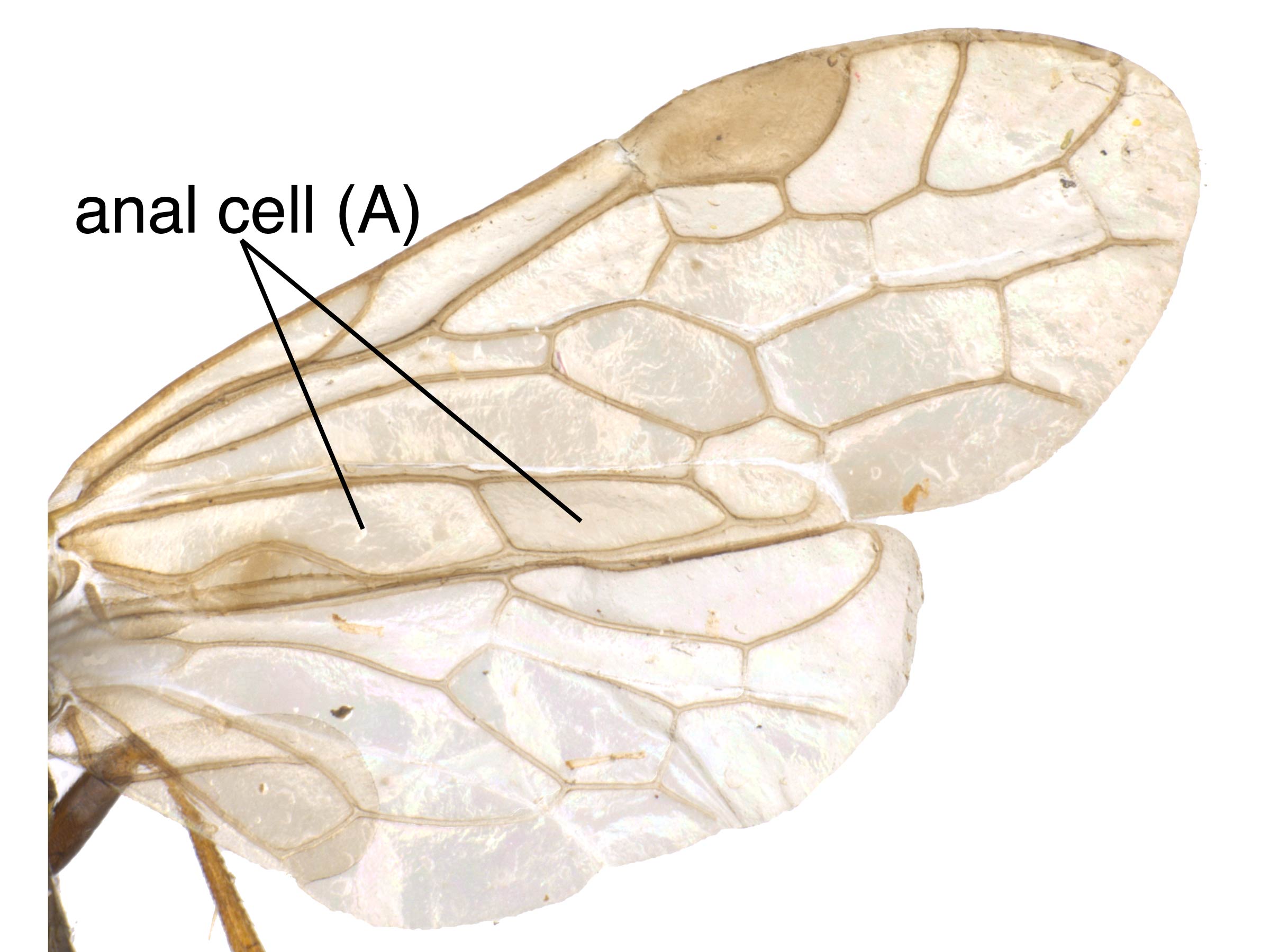 petiole absent (Goulet 1992Goulet 1992:
petiole absent (Goulet 1992Goulet 1992: simple (Smith 1969eSmith 1969e:
simple (Smith 1969eSmith 1969e:Eustromboceros can be confused with similar species in the subfamily Selandriinae or tribe Aneugmenini. It can be distinguished from most other genera by the absence of a fore wingfore wing:
the anterior wing of each pair of wings; usually the largest wing of the pair
 anal crossveinanal crossvein:
anal crossveinanal crossvein:
a crossvein that goes through the center of the basal anal cell
, from closely related Aneugmenus by the lack of an occipitalocciput:
the posterior surface of the head
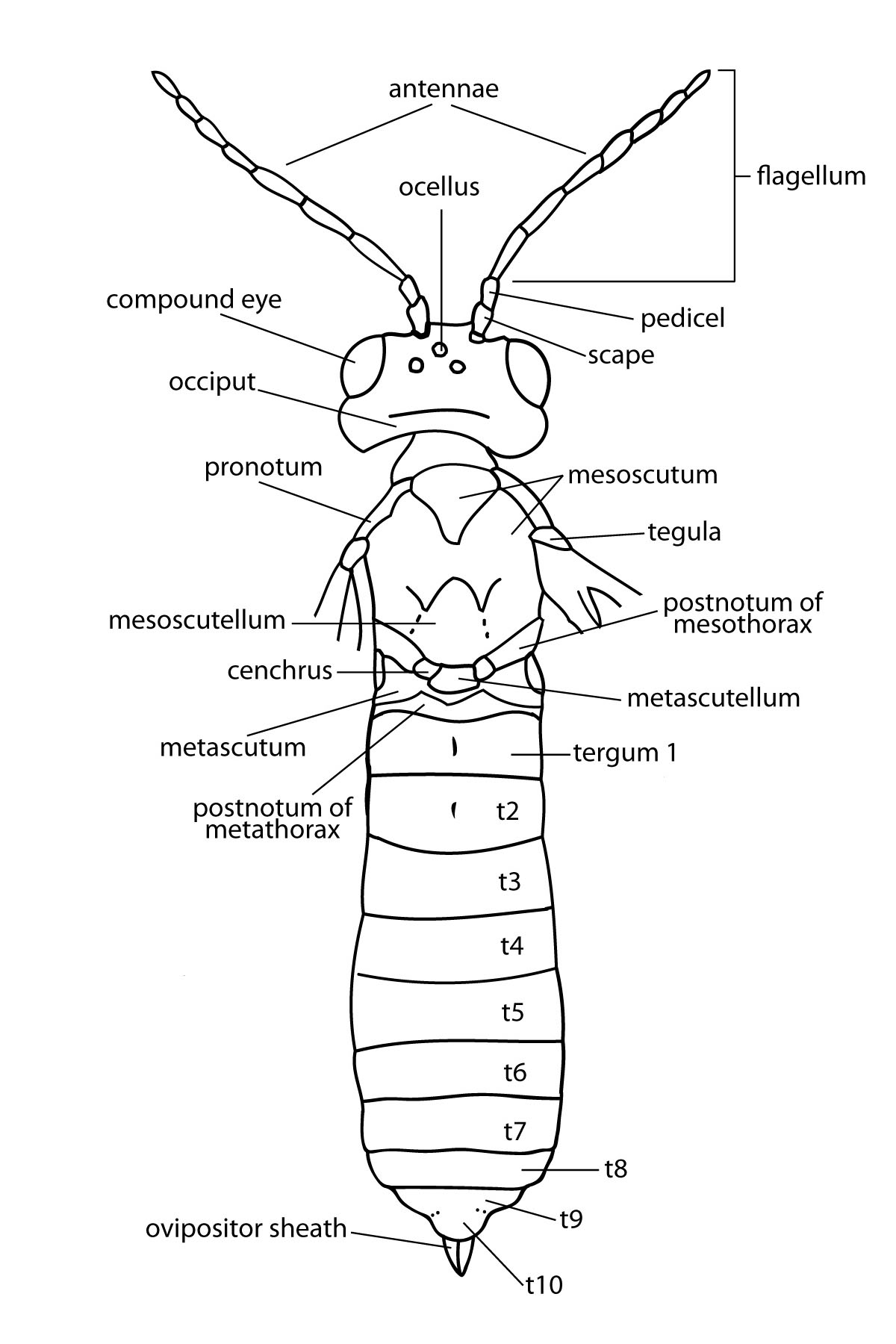 ridge, and from Birka by the malar spacemalar space:
ridge, and from Birka by the malar spacemalar space:
the minimum distance between the base of the mandible and the ventral margin of the compound eye
 length (Smith 1969eSmith 1969e:
length (Smith 1969eSmith 1969e:
Smith DR. 1969e. Nearctic Sawflies. II. Selandriinae: Adults (Hymenoptera: Tenthredinidae). Technical Bulletin, U.S. Department of Agriculture 1398: 1-48.).
none
unknown
unknown
World: This genus is known only from North America (Taeger et al. 2010Taeger et al. 2010:
Taeger A, Blank SM, and Liston AD. 2010. World Catalog of Symphyta (Hymenoptera). Zootaxa 2580: 1-1064.).
North America: Eustromboceros rufocaudatus is a southwest species recorded in Arizona (Smith 1969eSmith 1969e:
Smith DR. 1969e. Nearctic Sawflies. II. Selandriinae: Adults (Hymenoptera: Tenthredinidae). Technical Bulletin, U.S. Department of Agriculture 1398: 1-48.). The other two species occur south of the United States: E. nigromaculatus occurs in Costacosta:
the robust vein on the anterior margin of the wing; vein C
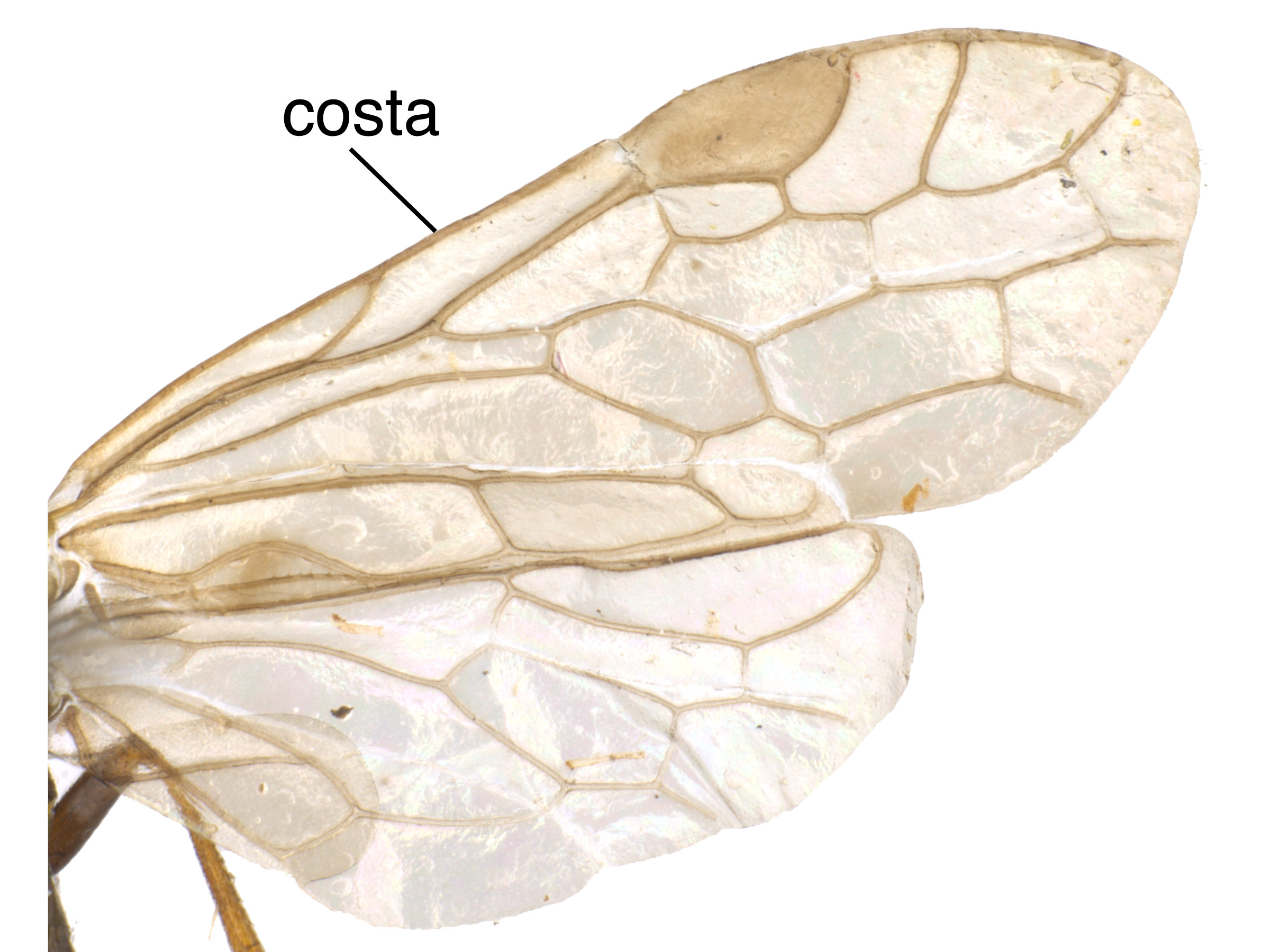 Rica and E. melanopterus in Mexico City, Mexico (Rohwer 1911Rohwer 1911:
Rica and E. melanopterus in Mexico City, Mexico (Rohwer 1911Rohwer 1911:
Rohwer SA. 1911. New sawflies in the collections of the United States National Museum. Proceedings of the United States National Museum 41: 377-411., Enderlein 1920Enderlein 1920:
Enderlein G. 1920. Symphytologica II. zur kenntnis der Tenthrediniden. Sitzungsberichte der Gesellschaft Naturforschender Freunde zu Berlin 9 (9): 347-374., Smith 1995Smith 1995:
Smith DR. 1995. The sawflies and woodwasps. In: Hanson PE and Gauld ID, eds. The Hymenoptera of Costa Rica. Oxford University Press. Pp. 157-177.).
Map data from: GBIF.org (29 October 2019) GBIF Occurrence Download Eustromboceros and the Smithsonian National Museum of Natural History Entomology Collection (USNM)
Details about data used for maps can be found here.